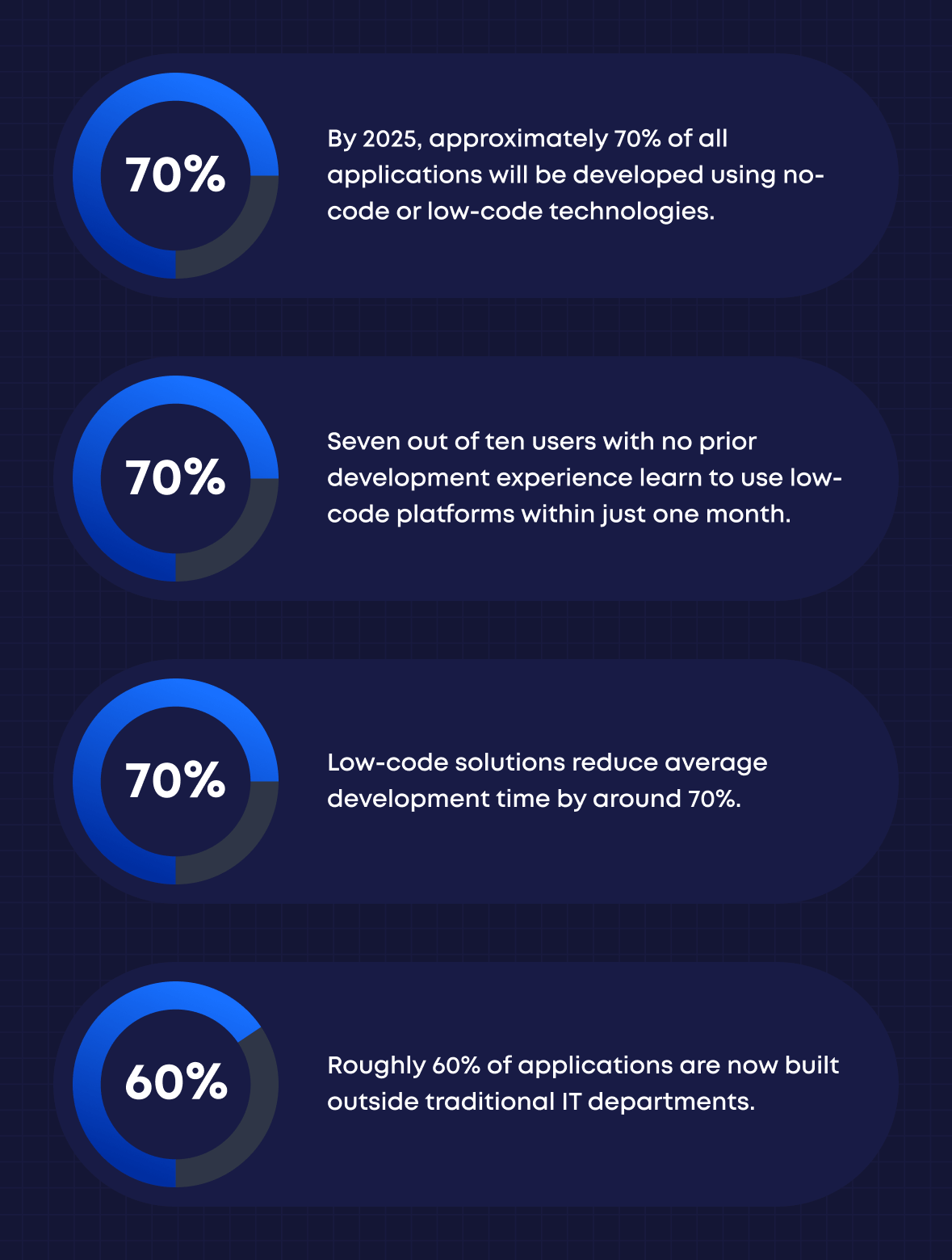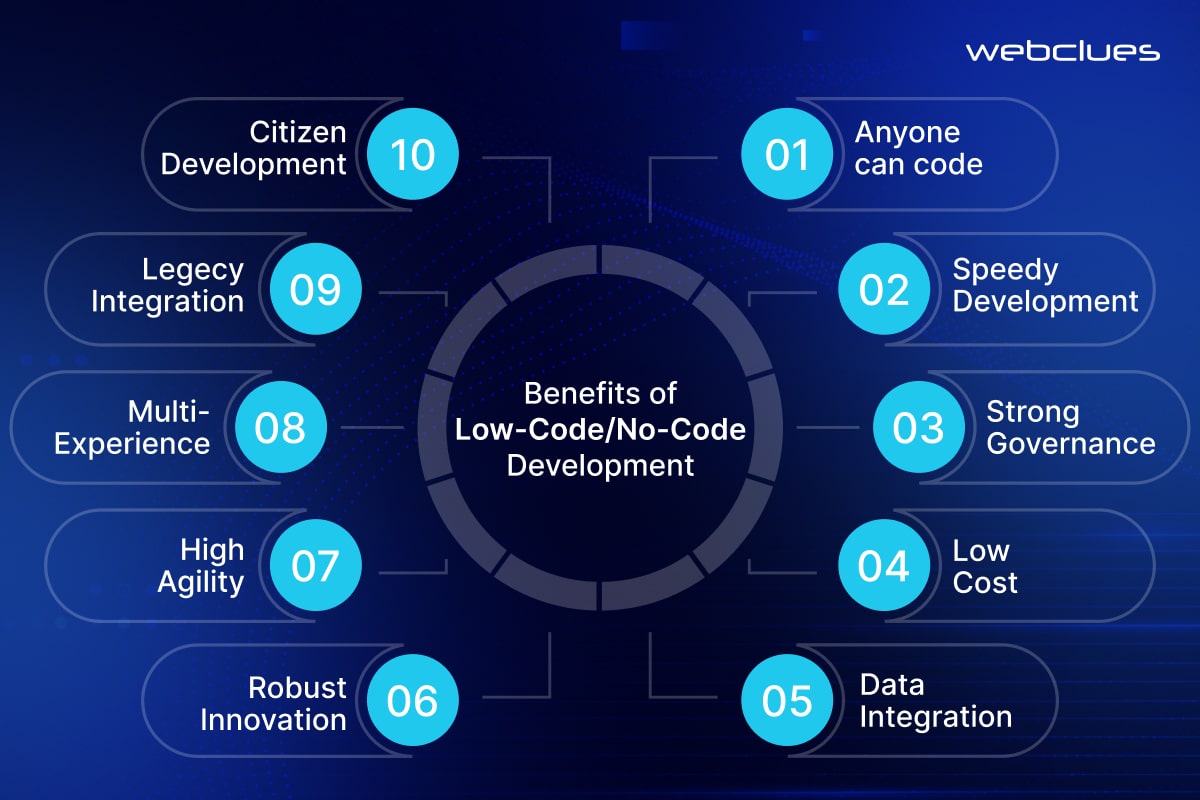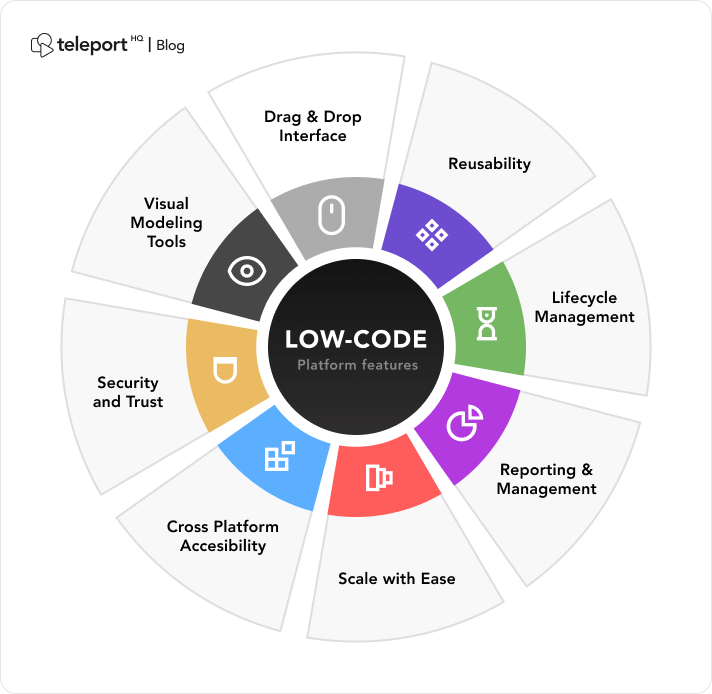Low Code
10 reasons why you should develop apps without code [^mjgrf0]
No tools found in showcase directive
Debug Info
json
{
"name": "tool-showcase",
"toolPaths": [],
"nodeChildren": [
{
"type": "paragraph",
"children": [
{
"type": "text",
"value": "tags: Low-Code, App-Builders",
"position": {
"start": {
"line": 4,
"column": 1,
"offset": 80
},
"end": {
"line": 4,
"column": 29,
"offset": 108
}
}
}
],
"position": {
"start": {
"line": 4,
"column": 1,
"offset": 80
},
"end": {
"line": 4,
"column": 29,
"offset": 108
}
}
}
]
}(2025-10-18T16:29.593Z)
Perplexity Query
(2025-10-18T16:29
.593Z)
Question:
Write a comprehensive one-page article about "Low-Code".
Model: sonar-pro
Low-Code: Democratizing Application Development for the Digital Age
Low-Code development refers to a software creation approach that uses visual interfaces, Visual Software Development, drag-and-drop components, and minimal hand-coding to rapidly build applications. Its significance lies in enabling both professional developers and so-called "Citizen Developers"—business users with little to no programming experience—to quickly deliver solutions that drive innovation and efficiency in a digital-first world.
[ye9x77]
[4mwb5x]

In today’s fast-paced business landscape, organizations face growing demands to digitize operations, adapt to changing markets, and bridge the IT resource gap. Low-Code platforms have emerged as a strategic tool, providing an agile and cost-effective alternative to traditional software development. By replacing much of the manual coding process with prebuilt modules and visual tools, low-code accelerates delivery while broadening participation in app creation.
[udqd69]
[4mwb5x]
How Low-Code Works and Where It’s Used
Low-code platforms offer graphical user interfaces that allow users to design applications by arranging components—such as forms, workflows, and integrations—visually. For example, an operations manager can assemble a new workflow automation by dragging and dropping elements on a screen, specifying business logic using simple rules, and connecting to databases or APIs without deep programming.
[udqd69]
[45s7is]
Practical use cases span industries and functions:
- Internal workflow automation, like automating employee onboarding or leave requests.
- Rapid development of customer-facing apps, such as web portals or mobile banking applications.
- Crisis response dashboards, built in days instead of months during emergencies.
Benefits and Applications
Key benefits of low-code include:
Enterprise use is on the rise, with finance, healthcare, and retail leveraging low-code for digital services, regulatory compliance, and customer engagement.
[4mwb5x]
Despite its advantages, low-code isn’t without challenges. Large-scale, mission-critical systems may require the scalability and customization of traditional development. There are also concerns about integration complexity, security, and governance as more non-technical users build business applications.
[ye9x77]
[4mwb5x]

Current State and Trends
Low-code’s popularity has soared. By 2026, analysts predict 75% of new applications will rely on low-code or similar technologies, and the global market could surpass $100 billion by 2030.
[ye9x77]
The majority of organizations—especially large enterprises—are adopting these platforms to address IT backlogs, fast-track project delivery, and empower business units. Gartner and Forrester rank Microsoft Power Platform, Mendix, OutSystems, and Appian among today’s leading technologies.
Citizen developers are becoming crucial: It’s projected that by 2026, non-IT staff will be responsible for 80% of low-code use cases, and “citizen developer” app demand is growing five times faster than traditional IT capabilities can deliver.
[ye9x77]
Recent advances focus on expanding integration options, embedding AI-powered features, and enhancing security controls for enterprise adoption.
[4mwb5x]

Future Outlook
Low-code technology is likely to reshape digital transformation strategies in coming years. With artificial intelligence infusing these platforms, expect even greater automation, smarter app generation, and enhanced customization. As more organizations embrace low-code for both internal and external solutions, the boundary between professional developer and business user will blur, making rapid software innovation a core business capability.
In summary, low-code development is transforming how organizations create and adapt software, making application development faster, more affordable, and accessible to many. As the pace of change accelerates, low-code will play a central role in digital innovation across industries.
Footnotes
Citations
[udqd69] 2025, Oct 18. 10 Benefits of Low-Code + Industry Best Practices in 2025. Published: 2025-06-30 | Updated: 2025-10-18
[ye9x77] 2025, Oct 18. 26 low-code trends for 2025: Key statistics and insights - Hostinger. Published: 2025-05-27 | Updated: 2025-10-18
[4mwb5x] 2025, Oct 18. What Is Low-Code Development? Ultimate Benefits, Trends, and .... Published: 2025-06-27 | Updated: 2025-10-18
[45s7is] 2025, Oct 14. 4 Benefits of Low-Code Application Development - Jitterbit. Published: 2025-01-02 | Updated: 2025-10-14
[5]: 2025, Oct 16. The Benefits of Low-Code: Choosing the Best Platform in 2025. Published: 2024-02-12 | Updated: 2025-10-16
[6]: 2025, Oct 18. Low-code no-code platforms and a culture of innovation | EY - US. Published: 2024-10-09 | Updated: 2025-10-18
[m2hfe1] 2025, Oct 12. 10 Benefits of Low-Code Application Development - Creatio. Published: 2024-07-31 | Updated: 2025-10-12